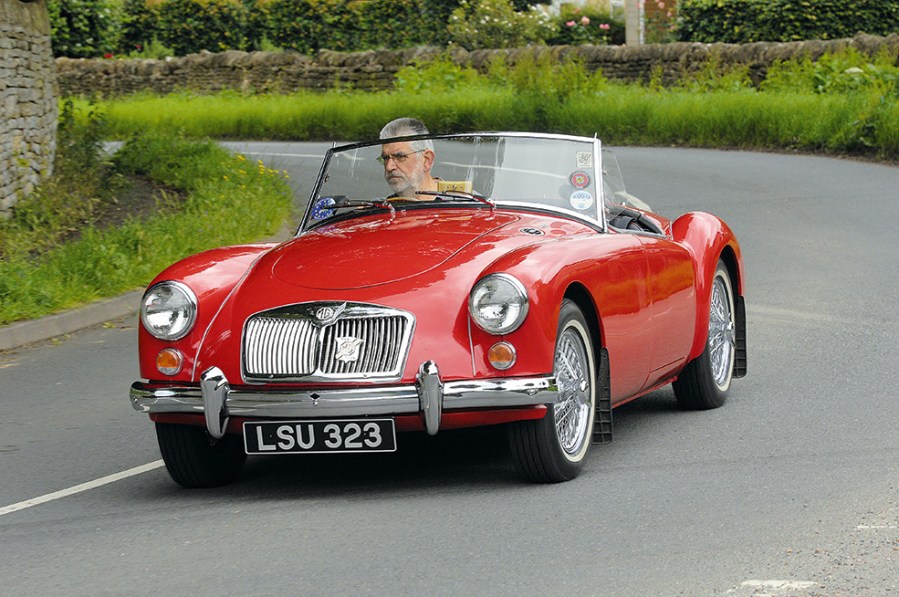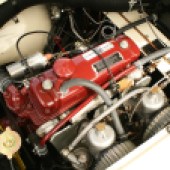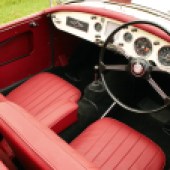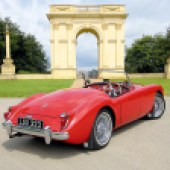The MGA is one of the best-looking British sports cars, with simple mechanicals and a back-to-basics driving experience adding to its appeal
Words: Jack Grover
The new MGA was longer, wider, more spacious and more refined than the T-Series models it replaced, finally bringing MG into the modern era. With startlingly pretty and streamlined full-width bodywork, supported by a brand-new chassis with the seats mounted between the rails, it boasted a low centre of gravity and a low-slung stance. Power now came via a 1489cc BMC B-Series engine making 68bhp, while the four-speed gearbox was also from the BMC parts bin, bringing with it a remote floor-mounted gear lever. Faster in acceleration and top speed than the outgoing TF, the MGA was also a vast improvement in terms of handling, roadholding, ride and refinement. The octagon was back and on fighting form.
A year after initial launch MG expanded the MGA lineup by offering a factory coupe model with a fixed all-steel roof boasting a wraparound rear window and an enlarged windscreen, a restyled dashboard plus winding side windows and quarterlights.
To really show the potential of the new model, a high-performance version of the MGA was introduced in 1958. This had a cutting-edge 1588cc version of the B-Series, with an all-new aluminium alloy twin-cam cylinder head and raised compression ratio. With 108bhp on offer, the MGA Twin Cam had a top speed of 113mph and a 0-60mph time of 9.1 seconds – figures that were superior to those of the more expensive Austin-Healey 100/6 of the time. The Twin Cam also featured four-wheel Dunlop disc brakes (standard MGAs had drums on each corner) and unique Dunlop knock-off ventilated steel wheels, and was available as either a roadster or a coupe.
From May 1959, the standard MGA model received the same 1588cc block as the Twin Cam, taking power to 79bhp. At the same time, front disc brakes became a standard fit. The MGA 1600 also gained new side/tail lamp units with separate indicator lamps front and rear. With the drop in sales of the Twin Cam, a small number of 1600s were built to 1600 Deluxe specification, with the high-performance model’s four-wheel disc brakes and unique wheels.
The Mk2 MGA was introduced in the spring of 1961 for the final year of production, with the engine enlarged again to 1622cc. The key visual indicator of a Mk2 is the inset grille with vertical rather than sloping bars, and at the rear are combined indicator/tail/brake lamp units from an early Mini but mounted horizontally. Some Mk2s (313 in total) were built to Deluxe spec.
Bodywork
Virtually all surviving MGAs will now have had some sort of restorative work carried out, although those that were restored in the 1980s may now be seeing age-related problems surface for a second time around. Beware of accident damage and poor-quality restoration work, which is usually more difficult to put right than ‘simple’ rust in an otherwise decent car.
The door pillars (ahead of and behind the doors), sills and lower part of the front wings are the main areas to check for corrosion in the body. The wings should be inspected around the headlamp bezels, the wheelarches and the seam where the wing joins the central bonnet/grille surround panel. The rear wings are prone to rust in the tapering section aft of the rear wheel – check from outside and from within the boot compartment. The doors are aluminium alloy on steel frames, so are prone to electrolytic corrosion, especially around the lower edge.
The cockpit floor consists of wooden boards supported on steel rails – both parts are prone to rotting out with age, so check the integrity on both sides. Also try to check the state of the two battery trays under the rear seat/luggage compartment. On coupe models specifically, check the seam where the rear of the roof joins the rear deck of the body as this also breeds rust and is very expensive to rectify if it’s got a hold.
The MGA’s flat sides and flowing wing line makes spotting wonky gaps or badly fitting panels quite easy. Fit and finish from the factory was decent and a high-quality restoration with good parts and attentive work can achieve excellent results. An issue with a lot of MGA body panels is that while they are available, they often need nipping, tucking and trimming to obtain a truly good fit, which adds to the cost. It’s not worth buying a sub-standard car and then paying a specialist to put it right.
The chassis needs to be checked in its main rails under the bulkhead and where the body sills attach, as well as around the hangers for the rear springs. The inside face of the main rails under the floorboards is also a rust trap. If repairs have been made to the chassis to put right rot or crash damage, be sure the work has been done to a good standard and that the chassis is still straight and true. New chassis are not available complete, and only a few repair sections have been remanufactured, so availability is patchy. This means that chassis repairs require a lot of expensive fabrication.
Brightwork – such as the bumpers, grilles, air vents and badges – are available new but often not to the same quality, so check the fit and finish of such items.

Engine and transmission
The standard B-Series engine really only needs to be checked for age-related faults. Oil pressure should be at least 50psi with a warm engine at cruising speeds, dropping to no less than 20psi at idle. Watch for blue exhaust smoke from worn bores and listen for rumbling sounds from the bottom end when under heavy load or acceleration. Beware of loud rattles from the timing chain. Modest drips oil from the underside are expected, but oil raining off the bellhousing or chassis rails is a sign of a tired engine, especially if accompanied by heavy breathing from the oil filler cap.
Running issues are usually down to tuning or balancing problems with the twin SU carbs, which can be rebuilt and set up for around £200. Plenty of MGAs have had performance upgrades or had later 1.8-litre engines from an MGB installed (sometimes with upgrades on top of that). These aren’t essential as the standard engine is perfect for touring and occasional use.
The Twin Cam is a lovely engine when in good form, and feels much more modern than the B-Series. However it is a specialist item, and although the failures that blighted it when new have been eradicated, it still needs correct set-up and maintenance to avoid trouble. A full rebuild can cost £10,000–12,000, and halfhearted rebuilds can be a nightmare to live with and to sort out. You want to see proof that a rebuilt engine has used the improved tappets, modified valve springs and steel valve seats. With an alloy head on an iron block, the cooling system and the condition of the coolant has to be first rate. Any signs of oil burning, high crankcase pressure, slapping timing chains or knocks and rattles from the innards should be a reason for rejection.
The gearbox is fundamentally strong but suffers from fast-wearing cone-type synchromesh that can lead to crunchy down-changes (especially on third, which gets the most abuse). Some chatter from the gears in neutral is normal for all but the freshest ’boxes, but whining or shrieking from the bearings under way is not good. However, don’t let a tired gearbox put you off an otherwise decent car, as it’s not difficult or expensive to track down a replacement that would be at least an improvement. Alternatively, the parts are readily available for a DIY rebuild and this is a fairly simple job if you have a decent set of tools and the right workshop manual.
Some MGAs will have the later MGB gearbox, which is basically the same unit but with stronger internals. These can also be fitted with overdrive – a welcome feature for using an MGA in modern conditions. You may also find cars fitted with five-speed gearboxes, usually from a Ford Sierra or Mazda MX-5.
Problems with the final drive are very rare and rebuilds/replacements are easily and cheaply available. Just look out for excessively noisy or rough-sounding bearings. Check for excess free play in the pinion gear or propshaft joints by coming on/off the throttle a few times and listening for clonking sounds. This is not a major problem but is undesirable and a good bargaining point.
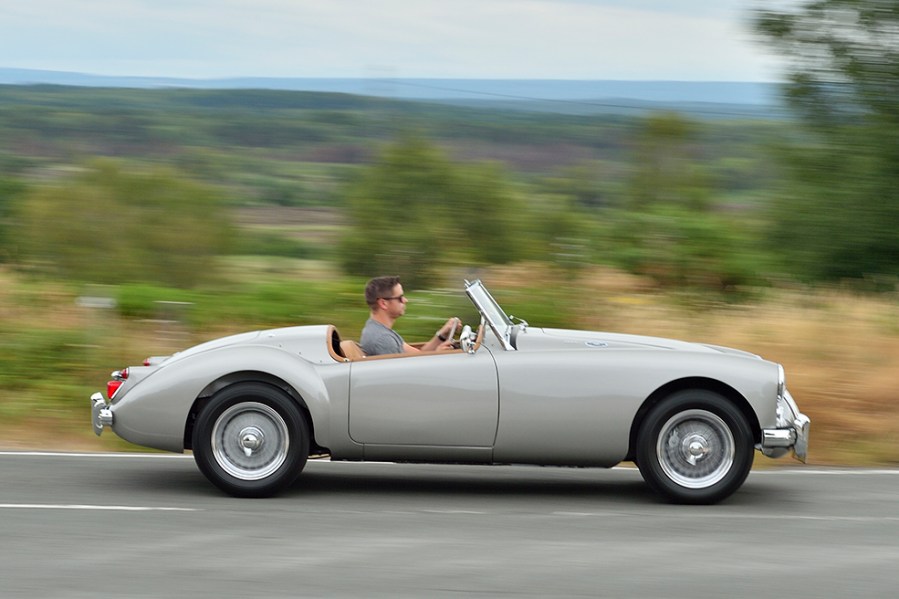
Suspension, steering and brakes
The main issue here is wear in the front kingpins, which usually need renewing every 50,000 miles or so but can be much shorter-lived if regular greasing is neglected (there are three grease points per side). Watch for wobbling or knocking through the front wheels and excessive play at the steering wheel when under way. Ideally, you want to get the front wheels off the ground and rock them in both dimensions to check for slack in the kingpin. This also lets you check for wear in the wishbone trunnions, which is less common but more difficult to fix. Uneven tyre wear also points to excessive slack in the front suspension.
The rear suspension just needs checking that the leaf springs haven’t rusted into a single mass, that they haven’t sagged (MGAs should sit level, and certainly not tail-down) and that the bushes at each end of the spring and in the rear hanger are in good condition.
There are lever-arm dampers on each corner – while not as effective as modern dampers, they should still bring any body motion to a stop within a single up/down cycle when each corner is bounced. Watch for leaks from the arm spindle seals or the filler caps. New or properly rebuilt damper units are not expensive or difficult to replace.
While heavy at low speeds, the steering should lighten up once on the move and always be pleasingly accurate. Excessive free-play is usually down to worn ball joints rather than the steering system itself.
Brakes-wise, the early all-drum system is the easiest to deal with but offers only adequate stopping power. The all-disc Twin Cam and Deluxe system is excellent but is harder to set up and keep right (and some parts are expensive these days), while the front disc/rear drum system is perfectly acceptable on both counts. Many early MGAs have been upgraded with front discs, and kits to fit rear discs (but not the official Twin Cam system) have been available for many years. In all cases check for vibration, ‘grabbing’ and noise from warped discs/drums and look for leaks from the wheel cylinders/calipers. Most MGAs suffer from lack of use, leading to rust and perished seals and flexible hoses. The master cylinder does double-duty for the brakes and the clutch, so has to be in good condition with regard to its seals and the cleanliness of the fluid within.
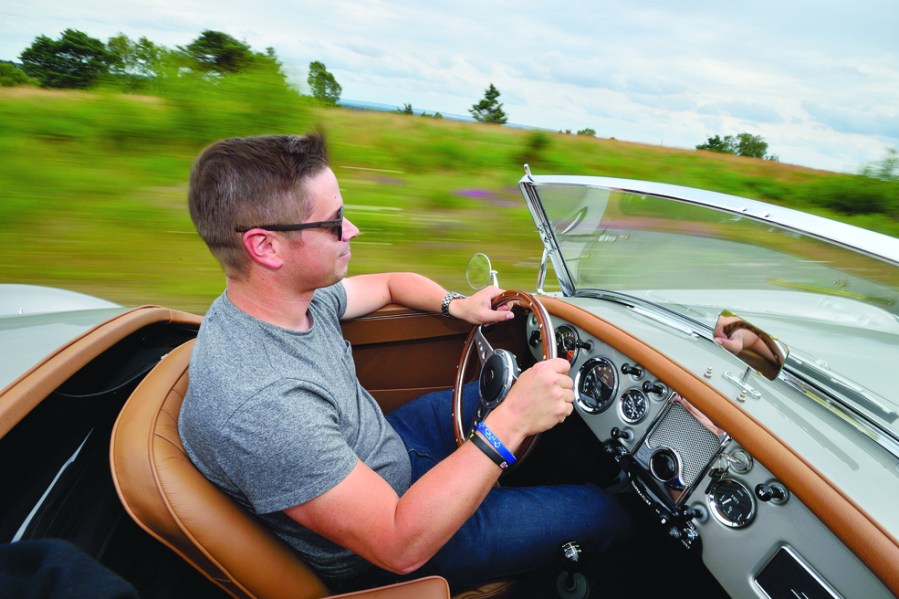
Interior, trim and electrics
In contrast to its successors with their vinyl seats and crackle-paint dashboards, the MGA’s cockpit was very well-trimmed, which is one of its great attractions. A well-kept interior is a major plus-point, while a shabby one will cost a lot to bring back to its original glory. This goes all the more for a coupe, for which the bespoke dashboard, seats, windows, carpets, door trims and headlining are not available in reproduction.
There is also a difference between an MGA with a good interior (many examples) and the correct interior (surprisingly few), and the latter are worth a significant premium. Many cars will have had their original leather seats or dash coverings replaced by plastic at some point in their lives. Cars with colour-matched interiors of the correct shade and with all the parts present and correct are rare and command higher prices.
The hood on an MGA is a ‘bundle of sticks’, so check it hasn’t become motheaten or damaged and that all parts of the frame are there and not bent or broken. Be sure that the sidescreens are present and fit properly. New hoods are not too expensive (around £500) but reproduction frame and sidescreen parts are.
The electrical system on an MGA is simple and straightforward. While most of the electrical components are from the BMC parts bin and so readily available, some of the interior switches are MGA-specific and must be present and correct. Check the condition of the wiring loom and its connections, as these degrade with age and can cause all sorts of headaches, although new looms are available and not too difficult to fit.

MGA: our verdict
If you want to experience all that was best about 1950s sports car motoring but with a little more comfort and practicality than a T-Type, the MGA is a great choice. The ride is surprisingly comfortable, the steering is very direct and a good MGA has a turn of speed that will put a smile on your face without risking your license. Best of all, it manages to straddle this divide between ancient and modern with consummate ease; anybody unfamiliar with classic cars will soon find they can adjust to an MGA.
Coupe models top out at the lowest prices, with a really good example rarely commanding more than £30,000 and an average around £18,000. A standard roadster goes up to about £37,000 – perhaps more for a really first-rate restoration – while the more everyday cars are currently sitting at around £20,000-£25,000. Twin Cams are expensive, with the very best worth up to £55,000 and a budget of at least £30,000 needed for a decent one. Twin Cam coupes are worth only slightly less than the roadster variants.
Deluxe-spec 1600s and Mk2s slot in between the Twin Cam and the standard cars, so long as they’re genuine and not reproductions. Viable projects start at around £5000 for a B-Series car and £10,000 for a Twin-Cam.

